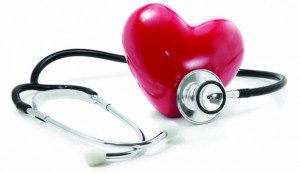By Jeff Davis, RRT-NPS, RCIS, Program Director, Cardiovascular Technology & Respiratory Care, FSW
 Cardiovascular disease has been, and continues to be, the number one cause of death in the United States and worldwide. It is also a leading cause of disability. The human cardiovascular system consists of the heart and blood vessels (arteries and veins). The purpose of the cardiovascular system is to deliver blood with oxygen, and nutrients to every cell in the human body and to remove some waste products from every cell of the body. Various disease processes can have a negative effect on the cardiovascular system.
Cardiovascular disease has been, and continues to be, the number one cause of death in the United States and worldwide. It is also a leading cause of disability. The human cardiovascular system consists of the heart and blood vessels (arteries and veins). The purpose of the cardiovascular system is to deliver blood with oxygen, and nutrients to every cell in the human body and to remove some waste products from every cell of the body. Various disease processes can have a negative effect on the cardiovascular system.
One form of cardiovascular disease is atherosclerosis. According to the National Heart, Lung, and Blood Institute, atherosclerosis is a progressive disease process where plaque accumulates inside the major arteries of patients (Please see figure #1). Atherosclerotic plaque is comprised of fat, cholesterol, calcium, and other substances found in the blood. As time goes on, the plaque can become hard and reduce the inner diameter of the arteries. This process can lead to blockages inside of the major arteries and decrease the amount of blood and oxygen delivered to the heart and other parts of the body like the brain, kidneys, and legs. The end result of atherosclerosis can include heart attack, stroke, kidney failure, or lower extremity amputation.
Some of the risk factors that may increase the likelihood of developing atherosclerosis and cardiovascular disease include a family history of cardiovascular disease, advancing age, male gender (although females tend to develop cardiovascular disease at an increasing rate after menopause), high blood pressure, high total and LDL cholesterol, cigarette smoking, diabetes, sedentary lifestyle, overweight/obesity, and high stress. However, patients can play an active role in reducing the impact of atherosclerosis and the development of cardiovascular disease by reducing their risk factors and adopting a lifestyle that focuses on cardiovascular health. A healthy cardiovascular lifestyle begins with a visit to the doctor for an overall physical exam and cardiovascular evaluation. Your doctor can then discuss risk factor reduction strategies with you. These may include maintaining a normal body weight, smoking cessation if applicable, a healthy low fat diet that is rich in fruits and vegetables, managing any diabetes or pre-diabetes conditions, engaging in moderate activity/exercise for about thirty minutes a day at least five days a week, and managing stress. Another important factor for cardiovascular health is to maintain a healthy blood pressure. If patients are unable to maintain a normal blood pressure with a healthy diet and exercise, medications may be needed. Maintaining normal cholesterol levels is another important way to help ensure cardiovascular health.
Cholesterol is a waxy substance that is an important part of the cells that make up our bodies. We all need cholesterol; however, too much can increase the likelihood of developing atherosclerosis and cardiovascular disease. It is produced by our bodies, primarily in the liver, and found in the foods we eat and drink. Our bodies make all of the cholesterol we really need. Cholesterol is transported through the blood in our bodies in the form of lipoproteins. Lipoproteins are comprised of lipids (fats) and proteins. Two types of cholesterol caring lipoproteins are low-density lipoproteins (LDL), referred to as “bad” cholesterol and high-density lipoproteins (HDL). LDL tends to carry cholesterol inside the wall of the major arteries and leads to the development of atherosclerotic plaques which can lead to cardiovascular disease. On the other hand, HDL tends to carry LDL away from the arteries and back to the liver where it is broken down and removed from the body. This HDL transport can reduce the development of atherosclerotic plaques and may reduce the likelihood of cardiovascular disease. For these reasons, HDL is referred to as “good” cholesterol.
Maintaining optimal amounts of total cholesterol, LDL, and HDL will help preserve cardiovascular health. According to the National Institutes of Health a total cholesterol value of less than 200 mg/dl, a LDL level less than 100 mg/dl, and a HDL level greater than 40 mg/dl (the higher the better) are considered optimal. However, these recommendations may be changing and the doctor will determine the optimal values for any specific individual. A healthy lifestyle including a low fat diet, maintaining an ideal body weight, physical activity and reducing exposure to tobacco smoke all contribute to keeping cholesterol levels in the optimal range. If these strategies are not enough, medications may help.
Everyone strives to enjoy a good quality of life. One way to help accomplish this goal is to develop a lifestyle that promotes optimal cardiovascular health. Maintaining a healthy lifestyle, reducing risk factors for atherosclerosis and cardiovascular disease, visiting the doctor on a regular basis, and following the doctors instructions will help us to be successful in improving our cardiovascular health.
Florida Southwestern State Collage
www.FSW.edu








